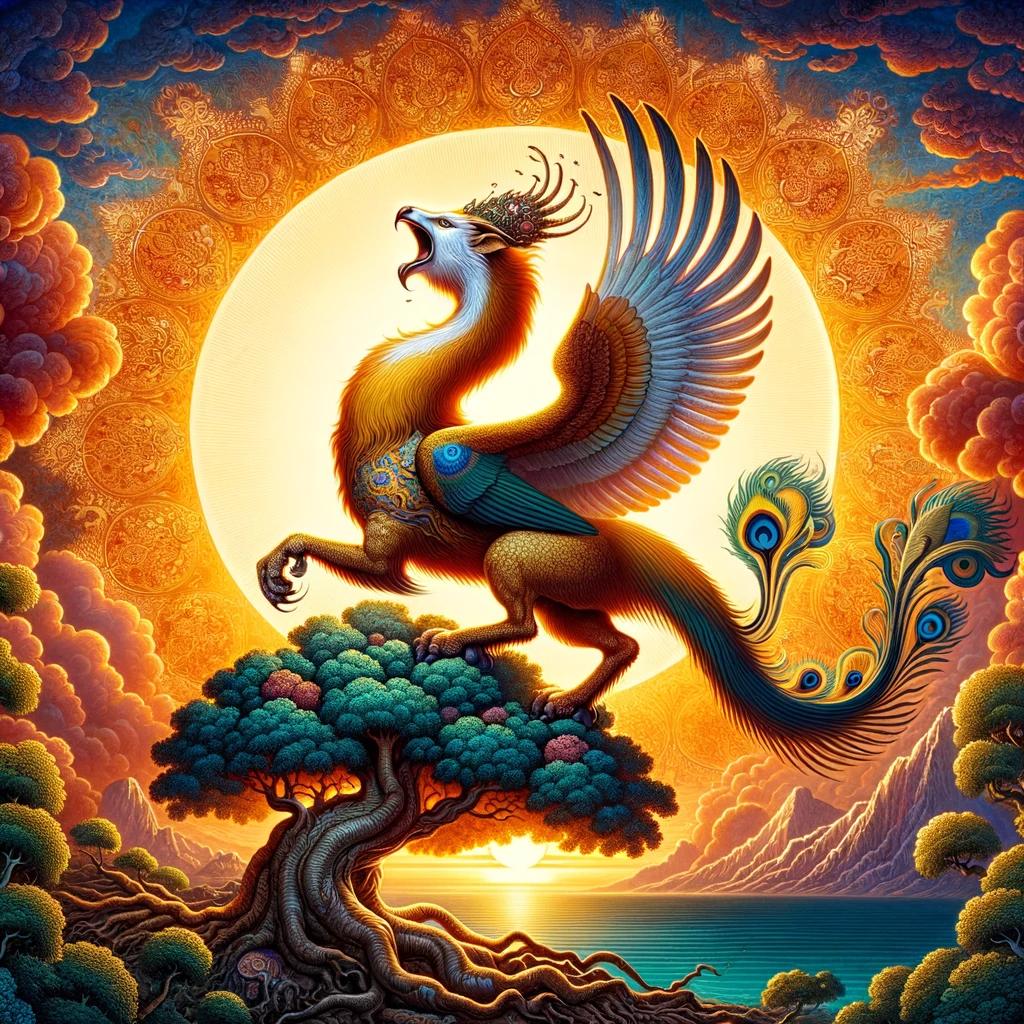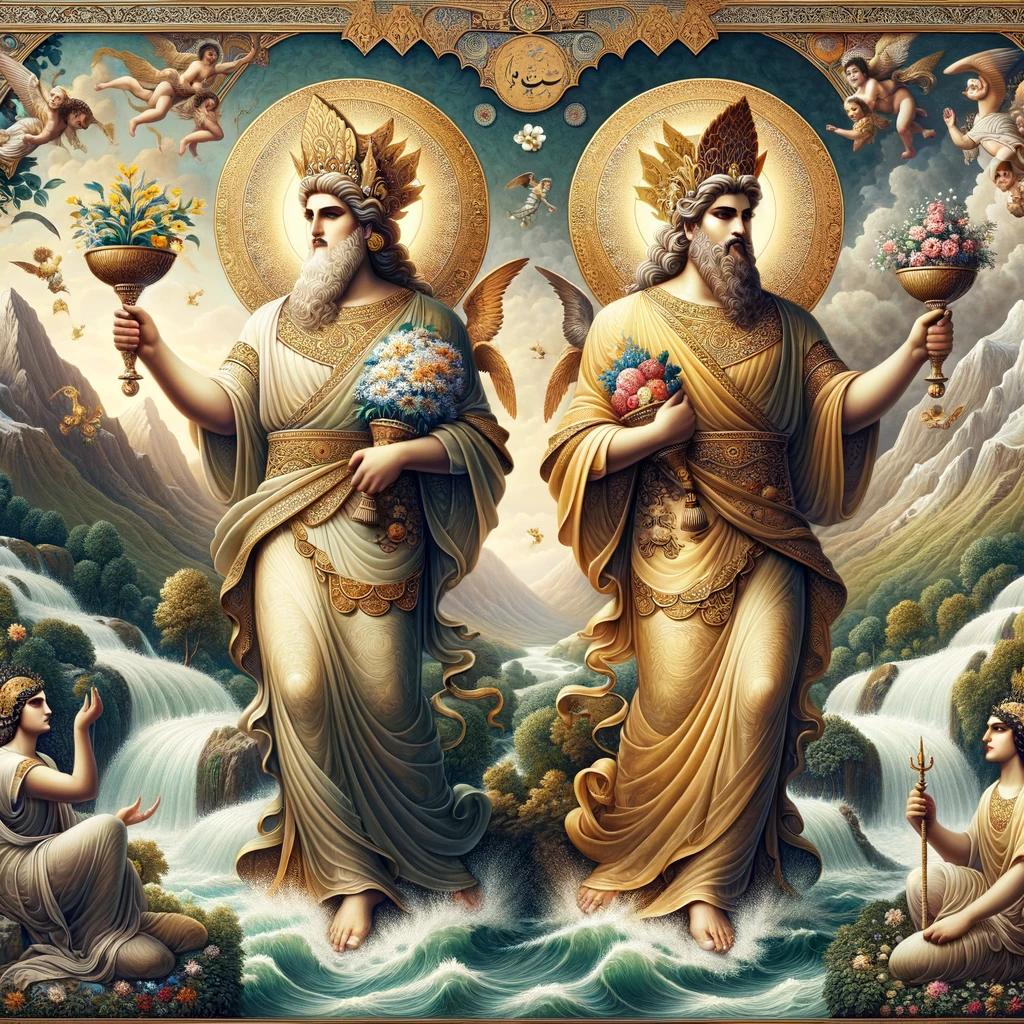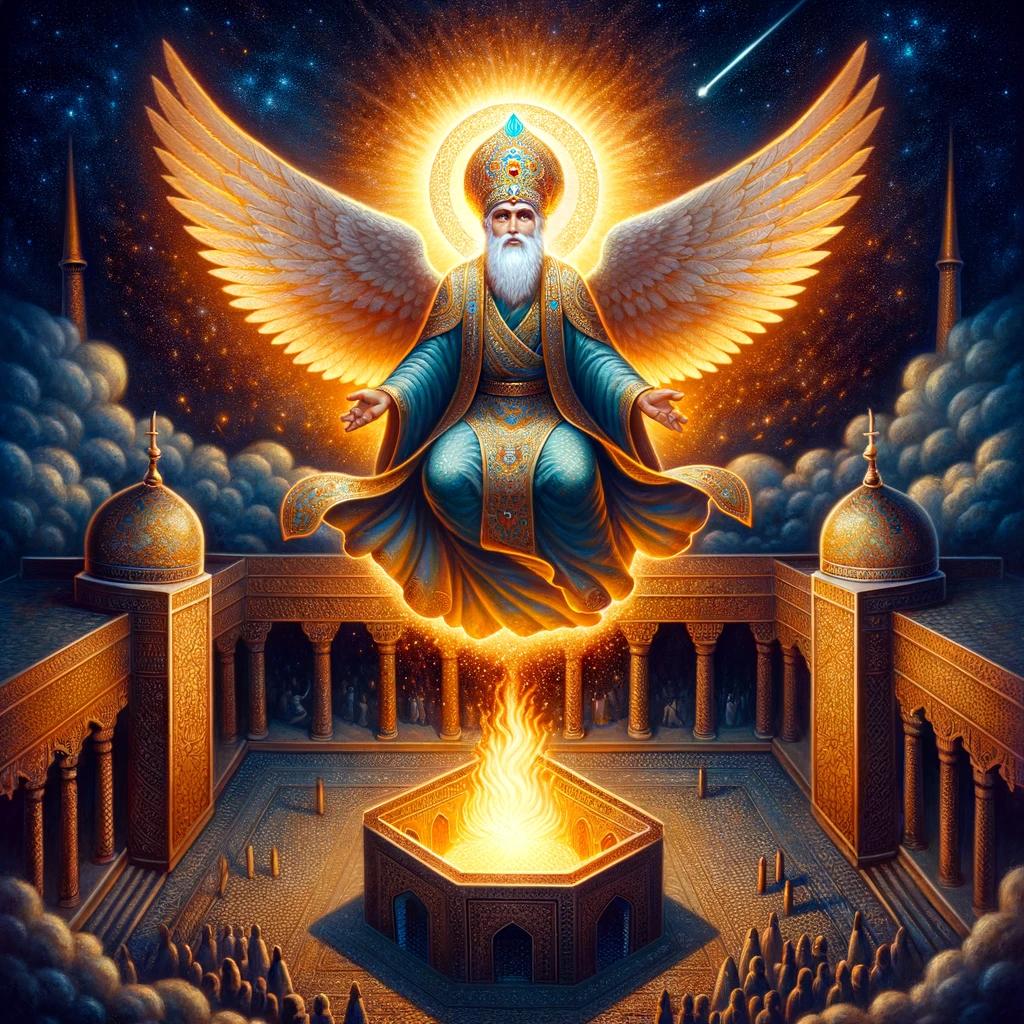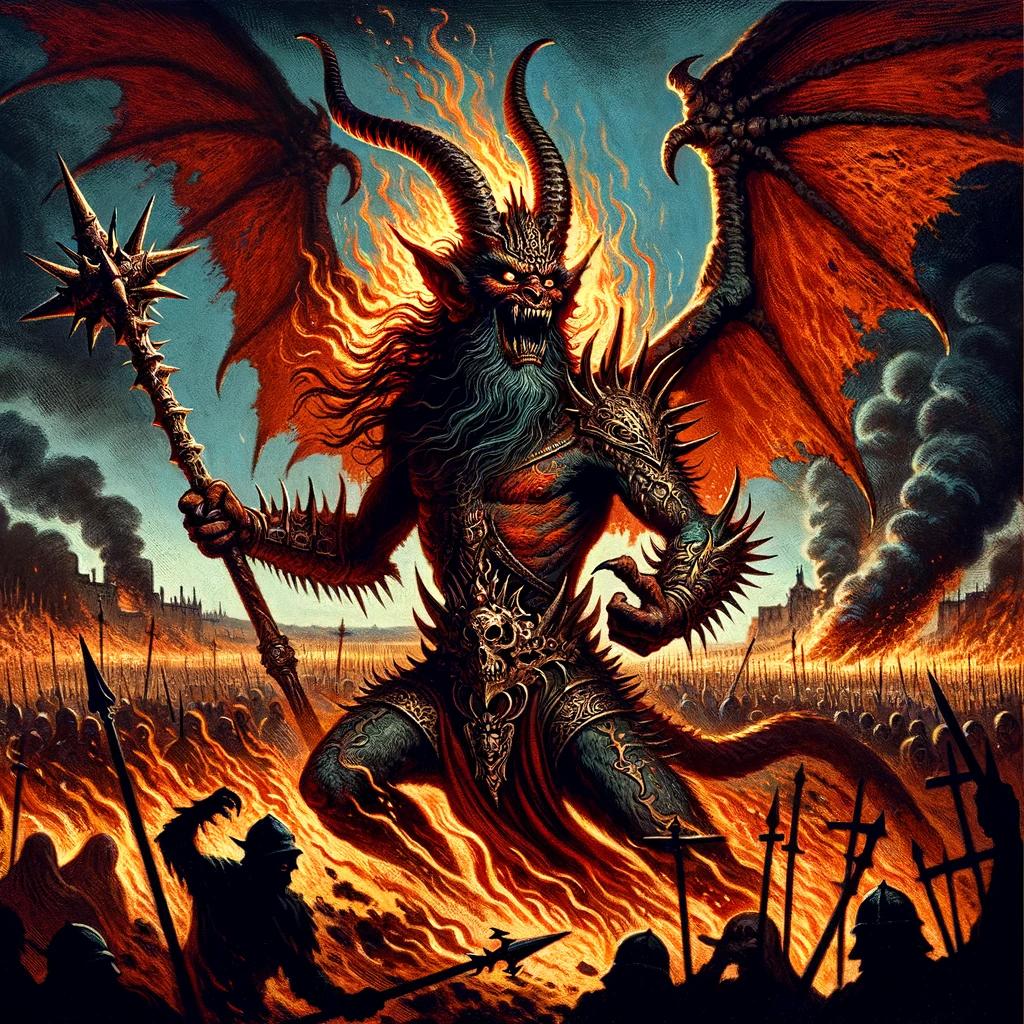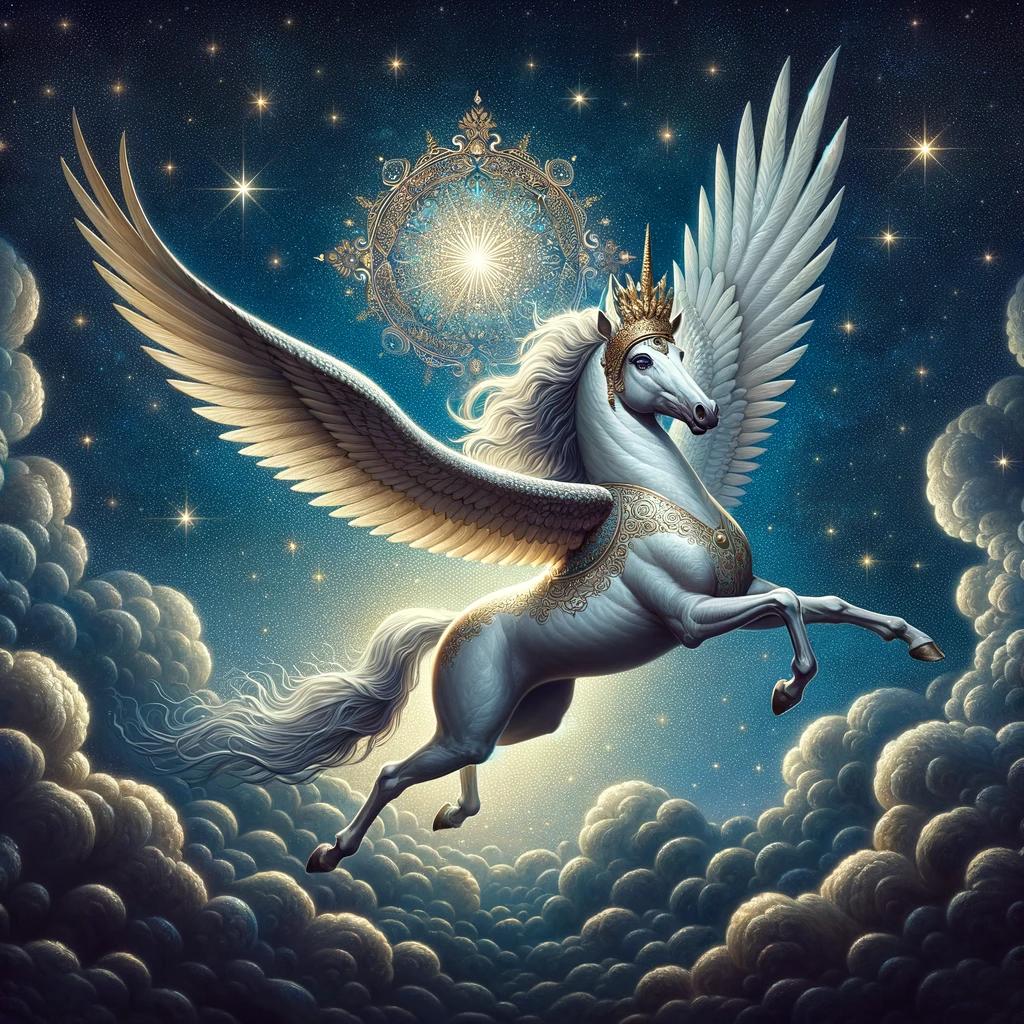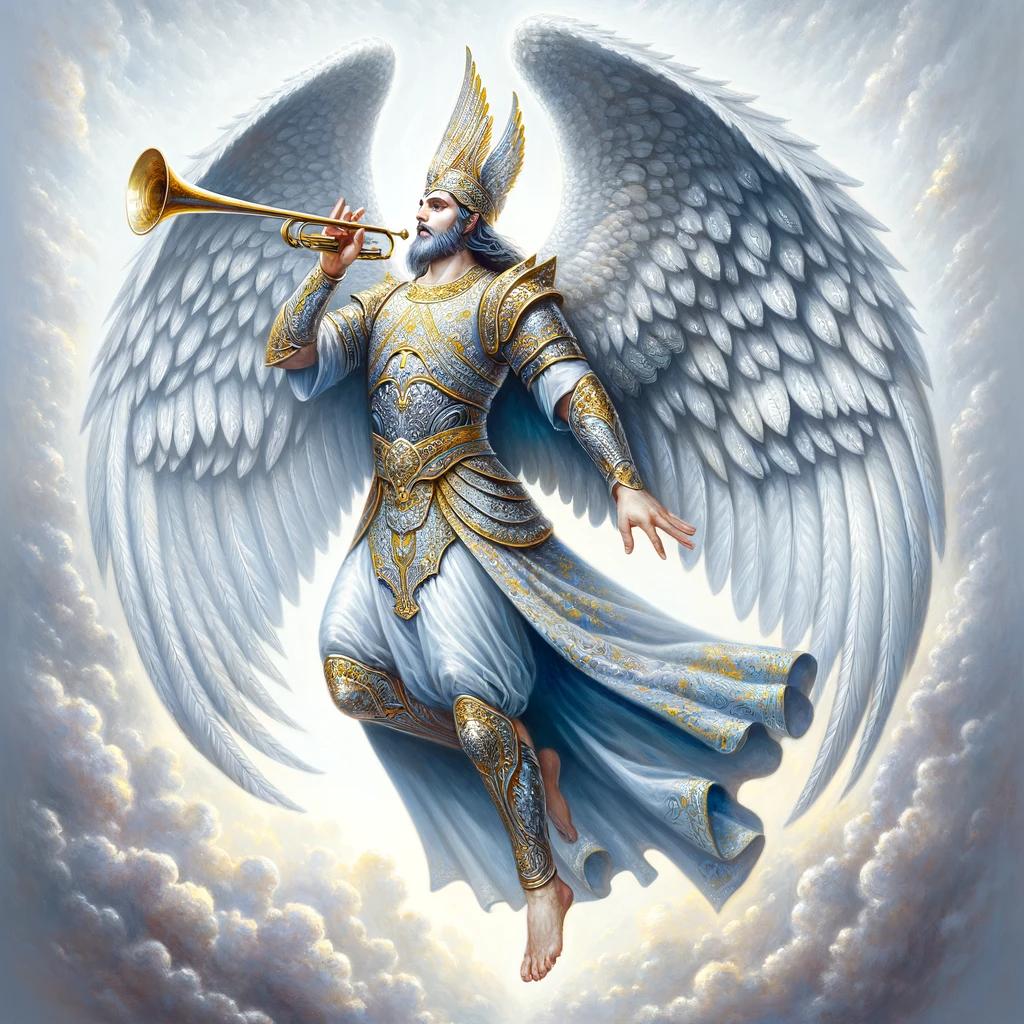Simurgh Bird Story: A Mythical Tale of Wisdom and Transformation
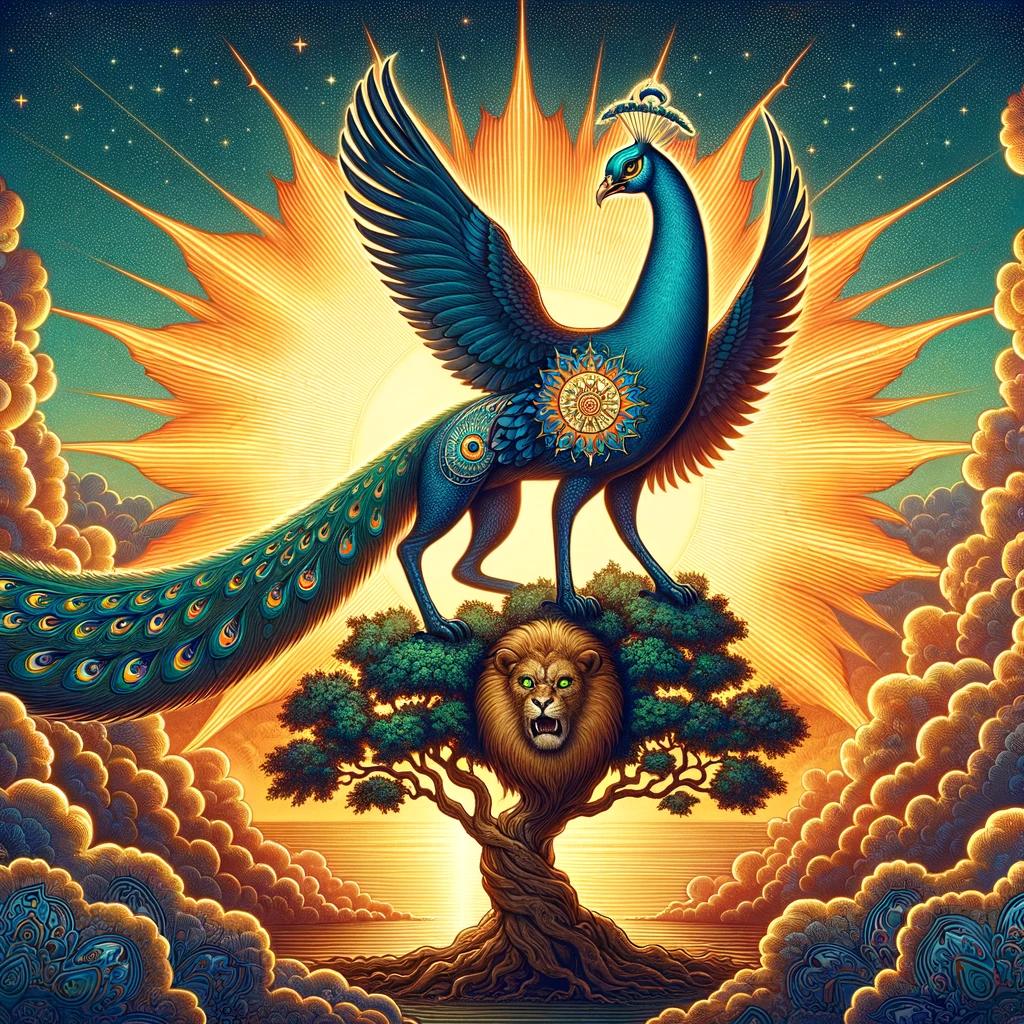
The Simurgh bird, a mythical creature in Persian culture, has captivated minds throughout the ages. Believed to possess immense wisdom and ancient knowledge, it serves as a mediator between heaven and earth.
In Shahnameh, the epic Persian tale, the Simurgh plays a significant role in the story of Prince Zal. With its rich symbolism and representation of spiritual awakening, the Simurgh has also found its place in art, architecture, and even popular culture.
Explore the themes of wisdom and transformation in the captivating Simurgh bird story.
The Origins of the Simurgh Bird
The Simurgh bird, a fascinating and mythical creature, has its origins deeply rooted in Persian culture. With a rich and storied history, it has captured the imaginations of people throughout the ages.
According to ancient texts, the term “Simurgh” derives from the Persian words “sēnmurw” and “sīna-mrū” in Pahlavi texts, holding its unique significance in Persian mythology. Although the Persian word for “thirty birds” is mistakenly associated with “Simurgh,” the creature itself is distinct and separate from other mythical birds such as the phoenix and the humā.
In Iranian mythology, the Simurgh is believed to be an incredibly ancient creature, having witnessed the world’s destruction three times. Its longevity grants it unparalleled wisdom and knowledge, possessing the secrets and wisdom of ages past.
This majestic bird is considered a purifier of the land and water, bringing fertility and abundance wherever it goes.
A significant myth surrounding the Simurgh tells the tale of its existence for 1,700 years before immolating itself in flames, similar to the mythical phoenix.
This act symbolizes transformation, rebirth, and spiritual purification.
The Simurgh is often depicted as a majestic and majestic creature, symbolizing the unity between earth and sky. As a mediator and messenger between these realms, it perches atop the mythical “Hōm” tree, situated in the midst of the world’s sea.
The Hōm tree is believed to possess medicinal properties capable of healing all ailments afflicting humankind.
The Simurgh’s presence in Persian culture spans across various art forms, from ancient palaces to contemporary buildings.
Its image adorns textiles, ceramics, and jewelry, showcasing its significance and enduring impact. The Simurgh’s outstretched wings symbolize the potential to transcend limitations and reach great heights.
In summary, the origins of the Simurgh bird can be traced back to ancient Persian mythology.
Its long-standing association with wisdom, transformation, and divine symbolism has made it an enduring symbol in Persian culture and beyond.
Mythological Birds and their Connections
Throughout various mythologies, birds have held a significant place, often symbolizing power, beauty, and transcendence. In the context of the Simurgh bird story, it is intriguing to explore the connections between the Simurgh and other mythological birds.
One such bird is the phoenix, renowned for its ability to rise from its own ashes and represent rebirth. While the Simurgh shares certain attributes with the phoenix, they are considered distinct creatures in Persian mythology.
Both birds represent transformation and renewal, serving as powerful symbols of overcoming challenges and beginning anew.
Another mythical bird often associated with the Simurgh is the humā, a bird with a human face known for its ability to bestow blessings and fortune.
The humā and Simurgh both possess benevolent qualities, and their inclusion in Persian folklore showcases the rich tapestry of mythical avian creatures in this culture.
- The Simurgh: An Ancient and Wise Being
- The Phoenix: Symbol of Rebirth and Renewal
- The Humā: Bestower of Blessings
The interconnectedness of these mythical birds adds depth to the Simurgh bird story, highlighting the universal themes of wisdom, transformation, and the auspicious nature of these avian creatures.
The Role of the Simurgh in Persian Culture
The Simurgh holds a significant role in Persian culture, being deeply ingrained in both art and mythology. This mythical bird is revered as a purifier of the earth and water, symbolizing fertility and the union between heaven and earth.
In Persian folklore, the Simurgh is believed to possess immense wisdom and knowledge due to its age and long life. It is said to have witnessed the world’s destruction three times, making it an ancient and wise creature.
Its association with the tree of life, Hōm, further adds to its symbolic significance in Persian culture. The Hōm tree, located amidst the world’s sea, is believed to hold medicinal properties capable of curing all diseases of humanity.
Throughout history, the Simurgh has been depicted in various forms of Persian art, including architecture, textiles, ceramics, and jewelry. With its wings extended, it signifies the ability to transcend limitations and reach great heights.
The Simurgh’s cultural influence extends beyond Persia, as regions influenced by Persian culture have also included the image of this majestic creature in their iconography. Its presence in different artistic forms exemplifies the enduring legacy and impact of the Simurgh within Persian culture.
The Simurgh as a Symbol of Wisdom and Knowledge
The Simurgh bird holds a prominent place in Persian culture as a symbol of wisdom and knowledge. This mythical creature is believed to possess the knowledge of all ages due to its ancient existence.
Its presence in the art and literature of Iran throughout history signifies its significance in conveying profound insights.
Representing the union between heaven and earth, the Simurgh acts as a mediator, imparting valuable wisdom to those who seek it.
Its ability to transcend barriers and reach great heights is symbolized by its majestic wings spread wide. This serves as a reminder that true wisdom comes from rising above limitations and exploring new horizons.
In Persian mythology, the Simurgh is associated with the Tree of Life, known as Hōm, which is located in the middle of the world’s sea. According to legend, this tree possesses medicinal properties and is believed to cure all ailments of humanity.
The Simurgh’s presence in the vicinity of the Tree of Life signifies its role as a purifier of the earth and water, bringing forth fertility and healing.
Throughout history, the Simurgh has been an influential motif in art and architecture.
From ancient palaces to modern buildings, its imagery can be found, portraying the quest for wisdom and knowledge. Textiles, ceramics, and jewelry also incorporate the Simurgh’s representation, showcasing its significance in Persian culture.
The symbolism of the Simurgh extends beyond Persian culture and has made its way into popular culture. One notable depiction is in the X-Men film saga, where the character Jean Grey transforms into a Simurgh.
This representation reflects the idea of personal transformation and the awakening of hidden potentials.
Overall, the Simurgh bird story serves as a profound symbol of wisdom and knowledge. It embodies the pursuit of higher understanding and the role of a timeless creature in guiding individuals towards enlightenment.
The Simurgh in Shahnameh: The Story of Prince Zal
In the epic Shahnameh, the Simurgh plays a significant role in the captivating story of Prince Zal. Born albino, Zal was abandoned by his father on the Alborz Mountain but was rescued and raised by the Simurgh.
During his time with the Simurgh, Zal gained immense wisdom and knowledge, imparted to him by this mythical creature. As Zal grew older, he decided to return to the world of men, and to assist him on his journey, the Simurgh gifted him with three golden feathers.
These feathers were to be burned if Zal ever found himself in need of the Simurgh’s aid.
This tale showcases the transformative power of the Simurgh as a teacher and mentor to Prince Zal.
The Simurgh’s role in shaping Zal’s character and providing him with essential wisdom symbolizes the guidance and knowledge that can be found in mythical creatures and their stories.
The Simurgh in Sufi Poetry: Metaphor for Spiritual Awakening
In Sufi poetry, the Simurgh holds a special place as a metaphor for spiritual awakening and enlightenment.
Poets often use the figure of the Simurgh to symbolize the journey of the soul in its quest for divine union.
Just as the Simurgh guides and protects the birds in ‘The Conference of the Birds’ by Attar, it represents the guidance and protection offered by a higher power in the human spiritual journey.
The birds in the story represent human flaws and obstacles, such as ego, desire, and attachment, which need to be transcended to attain enlightenment.
The Simurgh’s presence in Sufi poetry reminds us that the path to spiritual awakening requires surrender, purification, and self-awareness.
It urges individuals to look deep within themselves and acknowledge their own divine essence.
Through the symbolism of the Simurgh, Sufi poets invite us to embark on an inner journey, where we let go of our limited self and merge with the divine.
Just as the Simurgh encompasses all the birds in its own being, we too discover that the divine is not something separate from us but resides within our own hearts.
By exploring the Simurgh as a metaphor for spiritual awakening, Sufi poets inspire seekers to connect with their inner light, embrace their divine nature, and experience a profound transformation in their lives.
The Simurgh in Art and Architecture
The Simurgh, with its majestic presence and symbolic significance, has left a lasting impression in art and architecture throughout history. Its portrayal in various art forms reflects the rich cultural heritage of Persian mythology.
In architecture, the image of the Simurgh can be found gracing the walls of ancient palaces as well as modern buildings, showcasing its enduring appeal. Whether carved in stone or depicted in vibrant mosaics, the Simurgh’s wings spread wide, symbolizing the aspiration to transcend boundaries and reach new heights.
Textiles also bear the imprint of the Simurgh’s influence, with intricate designs incorporating its elegant form. From luxurious carpets to intricately woven tapestries, the Simurgh’s presence signifies a connection to the divine and a celebration of Persian culture.
Ceramics and pottery provide another canvas for the Simurgh’s depiction. Its graceful figure, often painted in vibrant colors, has adorned delicate ceramic bowls, plates, and vases. These exquisite pieces not only serve as decorative objects but also bear witness to the cultural reverence for the Simurgh.
Jewelry, too, has been inspired by the Simurgh, with its image adorning exquisite pieces crafted by skilled artisans. Pendants, brooches, and earrings exhibit the mythical bird’s majestic form, serving as a reminder of the Simurgh’s role as a harbinger of wisdom and transformation.
The intriguing allure of the Simurgh in art and architecture is a testament to its enduring significance in Persian culture. Through these creative expressions, the Simurgh continues to inspire awe and evoke a sense of mystical wonder in those who appreciate its mythical presence.
The Simurgh in Popular Culture
The Simurgh, with its rich mythology and symbolism, has left a significant imprint on popular culture, transcending its origins in Persian folklore. This mythical bird has found its way into various forms of modern entertainment, art, and literature, captivating audiences with its transformative and mystical qualities.
One notable appearance of the Simurgh in popular culture is in the X-Men film franchise. In these films, the character Jean Grey transforms into a Simurgh, depicting the bird as a symbol of personal transformation and the awakening of hidden potentials.
This representation resonates with audiences, highlighting the idea of embracing one’s true power and undergoing a metamorphosis.
Furthermore, the Simurgh has inspired contemporary literature and fantasy works. Authors from different cultures have incorporated the mythical bird into their stories, drawing upon its symbolism of wisdom and spiritual growth.
Through these narratives, the Simurgh continues to captivate readers and spark contemplation about one’s own journey of self-discovery.
The Simurgh’s presence extends beyond the realm of films and literature. Its image has been embraced by artists, who use it as a motif in various mediums, including paintings, sculptures, and jewelry.
The graceful and majestic wings of the Simurgh symbolize the ability to transcend limitations and soar to new heights, resonating with individuals seeking inspiration and self-expression.
Moreover, the Simurgh’s influence can be seen in fashion and design.
Its intricate and mystical aura has inspired designers to incorporate Simurgh motifs into clothing, accessories, and even home decor. By donning these representations, individuals connect with the symbolism of the Simurgh, expressing their fascination with its allure and the desire for personal growth and transformation.
In summary, the Simurgh’s presence in popular culture reflects its enduring appeal and timeless significance. Through films, literature, art, and design, the mythical bird continues to captivate and inspire audiences, inviting them to explore themes of transformation, wisdom, and the limitless potential within each individual.
Exploring the Themes of Wisdom and Transformation in the Simurgh Bird Story
Within the enchanting tale of the Simurgh bird, profound themes of wisdom and transformation emerge, captivating readers and sparking introspection. As we delve deeper into the story, we uncover the underlying messages and metaphors that resonate with our own human experiences.
Wisdom, a central theme in the Simurgh bird story, is symbolized by the ancient and knowledgeable creature itself. Like the Simurgh, wisdom is timeless and transcends generations. It represents the accumulation of knowledge, insight, and understanding that comes with the passage of time.
Through its connection to mythological birds like the phoenix and humā, the Simurgh exemplifies the transformative power inherent in embracing change and growth. The story reminds us that transformation is a necessary part of life, allowing us to shed our past selves and emerge stronger, wiser, and more resilient.
In Shahnameh, the Simurgh plays a pivotal role in the story of Prince Zal. As Zal navigates his journey of self-discovery, it is through the guidance and wisdom imparted by the Simurgh that he finds the strength to overcome challenges and embrace his true potential.
This narrative illustrates the transformative power of mentorship and the invaluable role of wise guidance in shaping our lives.
In Sufi poetry, the Simurgh is often used as a metaphor for spiritual awakening.
The tale of birds embarking on a quest to find the Simurgh mirrors our own search for purpose, enlightenment, and self-realization. It emphasizes the transformative journey towards self-discovery and the profound changes that occur when we release ego, embrace vulnerability, and delve deep into our inner selves.
Throughout art and architecture influenced by Persian culture, the image of the Simurgh with its wings outstretched represents the human capacity to transcend limitations and reach new heights of wisdom and transformation.
This symbolism serves as a poignant reminder of our own potential for growth and the boundless possibilities that await us.
In conclusion, the Simurgh bird story intricately weaves together themes of wisdom and transformation, inviting us to explore the depths of our own inner journey.
As we immerse ourselves in the rich symbolism and timeless wisdom embedded in this ancient tale, we are reminded of the power of transformation, mentorship, and overcoming obstacles on our lifelong quest for enlightenment.
.











